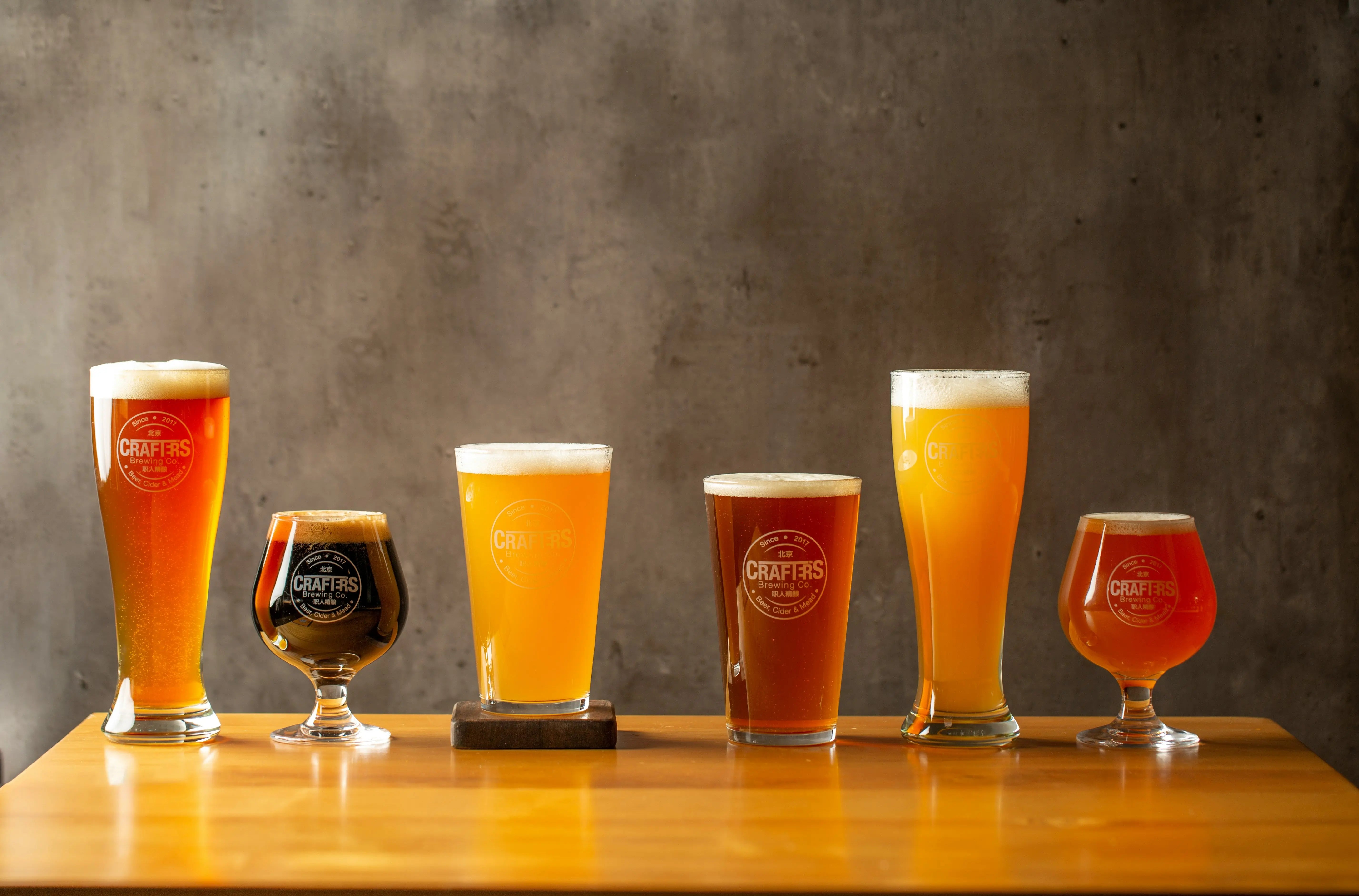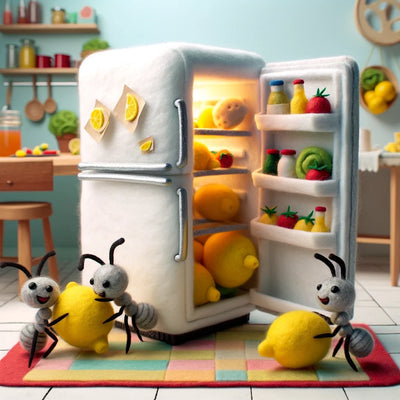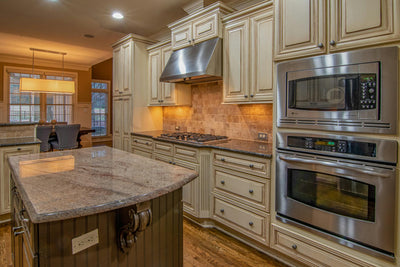Introduction to Beer Storage in Your Kegerator
For enthusiasts who take pride in their home draft systems, understanding the fundamentals of beer storage within your kegerator is essential. This not only maintains the integrity of your brews but also enhances your overall beer-drinking experience.
Importance of Proper Beer Storage
Proper beer storage is pivotal for preserving the quality and taste of your beer. The right conditions prevent premature aging, contamination, and off-flavors, ensuring that each pour is as fresh and flavorful as the brewmaster intended. Additionally, well-kept beer helps you avoid wastage, saving you time and resources in the long run.
Storing beer in your kegerator correctly also prolongs its shelf life, keeping it in prime condition for your consumption. Whether you are a homeowner, apartment dweller, or have a dedicated entertainment space, understanding the nuances of beer storage can elevate the occasion.
Overview of Using a Kegerator for Beer Storage
A kegerator is a specialized refrigerator designed to store and dispense kegs of beer. By combining the functionality of a fridge with the dispensing power of a keg, your kegerator is the quintessential tool for any beer aficionado. It not only cools your beer but also keeps it carbonated and ready to serve at a moment's notice.
When using a kegerator, you need to consider several factors to ensure optimal storage conditions, such as:
- Temperature Regulation: The ideal temperature range for storing most beers is between 34°F to 38°F. Precise control over the temperature within your kegerator is critical for maintaining the beer’s flavor profile.
- Pressure Control: Proper carbonation levels depend on maintaining the right pressure, which is often specific to the type of beer you are serving.
- Line Cleanliness: Regular maintenance of the beer lines ensures that each pour is free of contaminants, preventing off-flavors and potential health risks.
- Keg Rotation: To guarantee freshness, it's important to rotate your kegs and consume them within their optimal time frame.
By mastering these aspects of beer storage, your kegerator will serve as more than just a cooling appliance—it becomes an integral part of your beer enjoyment. For those looking to delve deeper into preserving different types of food and beverages, explore various storage tips and tricks with our articles on unlocking the secrets of rice storage and maximizing the freshness of your pork. Whether you seek to enhance your culinary skills or simply aim to impress your guests with perfectly chilled beverages, proper storage is key.
Temperature Control
Proper temperature control is paramount when storing beer in your kegerator to ensure the best quality and flavor of your brew. Here's how you can manage the temperature for optimal beer storage.
Ideal Temperature for Beer Storage
Different types of beer require different storage temperatures to maintain their distinct flavors and qualities. Generally, ales should be stored slightly warmer than lagers. The table below summarizes the ideal temperature ranges for different beer styles:
| Beer Style | Temperature Range (°F) |
|---|---|
| Ales | 50-55 |
| Lagers | 35-40 |
| Wheat Beer | 40-45 |
| Stouts | 50-55 |
Maintaining your kegerator within these temperature ranges will help preserve the integrity of your beer's taste and extend its shelf life.
Adjusting and Monitoring Temperature in Your Kegerator
To adjust the temperature in your kegerator, first locate the thermostat, usually found inside the unit. Set the thermostat to the desired temperature based on the type of beer you are storing. It is essential to use a reliable thermometer inside the kegerator to monitor the actual temperature and ensure it remains within the optimal range.
Regularly check the temperature and make slight adjustments as needed. Fluctuations can occur due to external factors like room temperature changes or frequent door openings. For assistance with setting the right temperature for your kegerator, consider reading our guide on unlocking the secrets discover how long rice can stay fresh in the fridge, which covers the importance of maintaining the correct temperature in refrigeration units.
If you find that your kegerator is not maintaining a consistent temperature, consult the manufacturer's troubleshooting guide. It may be necessary to investigate potential issues with the cooling system or insulation. Proper maintenance and temperature monitoring will ensure that your beer remains at its best quality for enjoyment.
Pressure Management
In the realm of kegerators, regulating pressure is pivotal for preserving the effervescence and flavor profile of your beer. This section will guide you through the science of beer carbonation and the techniques for setting and maintaining the appropriate pressure levels within your kegerator.
Understanding Beer Carbonation
Carbonation in beer is the result of dissolved carbon dioxide (CO2), which creates the bubbles and contributes to the mouthfeel and overall sensory experience of the beer. The carbonation level is influenced by the pressure inside the keg and the temperature at which the beer is stored. When the CO2 pressure aligns with the storage temperature, the beer maintains its intended level of carbonation.
| Beer Style | Recommended CO2 Volume |
|---|---|
| Ales and Lagers | 2.2 - 2.7 |
| Stouts and Porters | 1.7 - 2.3 |
| Wheat Beers | 2.4 - 2.9 |
| Belgians | 2.3 - 2.9 |
To comprehend the nuances of carbonation and its impact on different beer styles, refer to our article on unlocking the secrets discover how long rice can stay fresh in the fridge, which discusses the preservation of carbonation in relation to storage conditions.
Setting and Maintaining the Right Pressure Levels
Maintaining the correct pressure within your kegerator is essential to ensure your beer is dispensed with the right level of carbonation and without excessive foam. A CO2 regulator attached to the keg allows you to adjust the pressure according to the type of beer and its ideal carbonation volume.
To set the correct pressure:
- Consult the beer's recommended CO2 volume chart.
- Adjust the regulator to match the recommended pressure settings.
- Monitor the pressure regularly, as fluctuations can occur.
| Beer Style | Recommended Pressure (PSI) |
|---|---|
| Ales and Lagers | 10 - 14 |
| Stouts and Porters | 8 - 12 |
| Wheat Beers | 12 - 16 |
| Belgians | 15 - 20 |
Regular monitoring and adjustments may be necessary to maintain the right pressure, especially when the keg is new or nearly empty. For further insights into keg handling and the importance of maintaining pressure for beer freshness, explore our article on maintain your kegs glory discover the best cleaning kit for your kegerator.
By understanding beer carbonation and how to control pressure levels, you can ensure that each pour from your kegerator is as the brewer intended, with the perfect balance of flavor and effervescence.
Line Maintenance
Maintaining beer lines within your kegerator is essential to ensure the quality and flavor of your beer remain at their peak. Regular cleaning and preventing mold and bacteria growth are critical to this process.
Cleaning Beer Lines Regularly
To enjoy the best tasting beer, it is recommended that you clean the beer lines after each keg or at least every two weeks. This routine prevents the buildup of yeast, proteins, and hop resins that can negatively affect the taste of your beer.
Regular cleaning involves running a designated line cleaning solution through the lines, followed by rinsing with clean water. Here are the steps to ensure thorough cleaning:
- Disconnect the keg and remove any remaining beer from the lines.
- Prepare the cleaning solution according to the manufacturer's instructions.
- Attach the cleaning bottle to the tap and run the solution through the lines until it's empty.
- Rinse the lines by running clean water through in the same manner.
- Reconnect a fresh keg once the lines are clear and free of cleaning solution.
For a step-by-step guide and recommendations on the best cleaning kits, you can read our article on maintain your keg's glory discover the best cleaning kit for your kegerator.
Preventing Mold and Bacteria Growth in Beer Lines
Mold and bacteria are not only a health hazard but can also spoil the taste of your beer. To prevent their growth, it's important to maintain a clean and dry environment within your kegerator.
Here are some tips to avoid mold and bacteria:
- Dry the lines: After cleaning, make sure the lines are completely dry before reattaching the keg.
- Regular inspections: Check the lines and kegerator interior for signs of mold or bacterial growth.
- Replace lines: If you notice any contamination that cannot be cleaned, replace the beer lines immediately.
By following these maintenance tips, you can ensure that your beer remains fresh, crisp, and enjoyable. Remember, the key to cracking the code of understanding beer storage in your kegerator lies in diligent care and regular upkeep.
Keg Handling and Rotation
Proper handling and rotation of beer kegs are essential practices to ensure that every pour from your kegerator is fresh and flavorful. These steps are key to maintaining the quality and longevity of the beer stored within.
Proper Handling of Beer Kegs
Handling beer kegs correctly is vital to prevent any unnecessary agitation that could affect the beer's carbonation and taste. When you receive a new keg:
- Gently load the keg into your kegerator without shaking it.
- Connect the coupler to the keg, making sure it's securely in place to avoid leaks.
- Verify that all lines are properly connected and that there are no kinks or blockages.
When moving kegs, be sure to lift with your legs and not your back to avoid injury. If your kegerator is on casters, roll it slowly to its new location to keep the beer inside the keg as still as possible.
For detailed guidance on setting up and maintaining your kegerator, consider reviewing maintain your kegs glory discover the best cleaning kit for your kegerator.
Rotating Kegs for Freshness and Flavor
Rotating your kegs is crucial to ensure that you're serving the freshest beer possible. Follow a first-in, first-out (FIFO) rotation system to prevent beer from sitting too long before being consumed. Here's a simple table to help you track your keg rotation:
| Keg Number | Beer Type | Date Tapped | Notes |
|---|---|---|---|
| 1 | IPA | 01/10/2023 | |
| 2 | Stout | 01/15/2023 | |
| 3 | Lager | 01/20/2023 |
Keep a log of when kegs are tapped and finished. This will help you monitor the freshness and also aid in understanding your consumption patterns. If you notice a particular beer isn't being consumed as quickly, consider ordering smaller kegs or rotating it out for a more popular option.
For additional insights on keeping food fresh, explore articles such as unlocking the secrets discover how long rice can stay fresh in the fridge or stop wasting tomatoes optimal fridge storage times revealed.
By paying close attention to the way you handle and rotate your beer kegs, you'll ensure that every glass served is up to the high standards you and your guests expect from your kegerator-stored brews.
Troubleshooting Common Issues
Facing issues with your kegerator can be frustrating, but with the right knowledge, you can quickly address common problems like foamy beer or off-flavors. This section provides guidance to help you maintain the perfect pour and preserve the taste of your beer.
Addressing Foam Issues
Excessive foam when pouring beer is often a sign of an imbalance in your kegerator system. Here are some potential causes and solutions:
| Cause | Solution |
|---|---|
| Over-pressurization | Reduce the CO2 pressure and check for a stable reading over a few hours. |
| Temperature fluctuations | Ensure your kegerator is set to the ideal temperature for beer storage. |
| Dirty beer lines | Follow a regular cleaning routine with a kegerator cleaning kit. |
| Kinked or twisted lines | Inspect lines for kinks and straighten them to allow free flow of beer. |
Implementing these solutions can help reduce the amount of foam and ensure you pour a perfect beer every time. For more information on beer line maintenance, check out cleaning beer lines regularly.
Dealing with Off-Flavors in Beer
Off-flavors in beer can occur due to several reasons, including contamination and oxidation. Here's a quick guide to identifying and rectifying these issues:
| Off-Flavor | Possible Cause | Solution |
|---|---|---|
| Sourness | Bacterial contamination | Clean and sanitize all components thoroughly. |
| Metallic | Contact with metal components | Check for corroded parts and replace as necessary. |
| Oxidized or stale | Exposure to air | Check for proper sealing of keg and replace O-rings if needed. |
| Buttery | Diacetyl | Ensure the beer has been stored at the correct temperature and pressure. |
If you experience persistent off-flavors, consider seeking advice from a professional or fellow enthusiasts in the refrigeration community. Each issue can be a learning opportunity to refine your approach to kegerator maintenance for optimal beer storage. Additionally, expand your knowledge on food and beverage preservation by exploring topics like how long does pork last in the fridge or the lifespan of rice in refrigeration.
Handling your kegerator with care, regular maintenance, and addressing issues promptly will ensure your beer remains fresh, flavorful, and ready to enjoy. Keep these troubleshooting tips in mind, and you'll be well-equipped to tackle common problems that may arise with your kegerator.
Upgrading Your Kegerator Setup
Enhancing and customizing your kegerator setup not only improves the quality and freshness of your beer but also makes the storage and dispensing process more efficient and enjoyable. Explore the multitude of accessories and customizations available to elevate your kegerator to the next level.
Enhancing Beer Storage with Accessories
To ensure your beer remains at its peak for enjoyment, consider integrating a variety of accessories into your kegerator setup. These enhancements can range from simple additions to more advanced equipment, all designed to augment the functionality and effectiveness of your beer storage.
-
Digital Thermometers: Install a digital thermometer to precisely monitor the internal temperature of your kegerator, ensuring your beer remains within the ideal temperature range for optimal flavor and preservation.
-
Keg Insulators: Use keg insulators to help maintain a consistent temperature around your beer kegs, even when the kegerator door is opened frequently.
-
Drip Trays: Equip your kegerator with a high-quality drip tray to catch any spills or drips, keeping your kegerator clean and sanitary.
-
Cleaning Kits: Regularly clean your kegerator with a specialized cleaning kit, which can help preserve the taste of your beer and extend the life of your equipment. Discover the best options in our article on maintain your kegs glory discover the best cleaning kit for your kegerator.
Customizing Your Kegerator for Optimal Performance
Customizing your kegerator involves more than just aesthetic changes; it's about fine-tuning the system to work harmoniously with your specific beer storage needs. Tailoring your setup can lead to enhanced performance and an overall better beer-drinking experience.
-
Adjustable Shelving: Install adjustable shelving within your kegerator to accommodate different keg sizes or to store beer-related accessories.
-
Dual-Regulator Systems: Consider a dual-regulator system to serve different beers at their respective ideal pressures, ensuring each variety is dispensed perfectly.
-
CO2 Monitors: A CO2 monitor can alert you to any changes in gas levels, helping you maintain the right pressure for carbonation and prevent flat or over-carbonated beer.
By taking the time to enhance and customize your kegerator, you invest in the quality and longevity of your beer storage. These upgrades not only make your kegerator more efficient but also contribute to the overall enjoyment of your home-brewed or commercially crafted beers. Whether you're a seasoned beer enthusiast or new to the kegerator scene, a well-maintained and optimized setup is key to cracking the code of understanding beer storage in your kegerator.
Get Your Upgrade or New Addition at Fridge.com
Shop the world's best brands at Fridge.com.
Whether you're searching for your perfect fridge, freezer, wine fridge, beer fridge, ice maker, or kegerator, we have what you need.
We also have tons of awesome articles about kitchen stuff and home news. Enhance your home, garage, backyard, patio, and office with the coolest essentials. With every necessary type of residential refrigerator or freezer in our collection, we've got you covered.
Elevate your game and shop now at Fridge.com!






